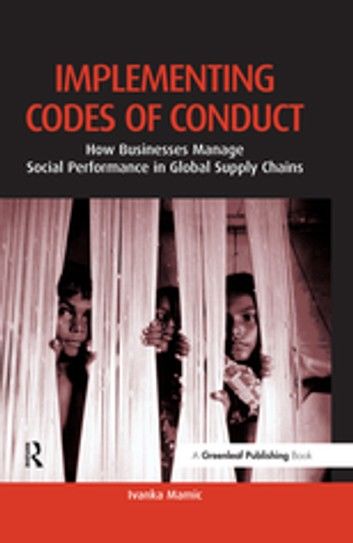| FindBook |
有 1 項符合
Implementing Codes of Conduct的圖書 |
 |
Implementing Codes of Conduct 作者:Ivanka Mamic 出版社:Taylor & Francis 出版日期:2017-09-08 語言:英文 |
| 圖書館借閱 |
| 國家圖書館 | 全國圖書書目資訊網 | 國立公共資訊圖書館 | 電子書服務平台 | MetaCat 跨館整合查詢 |
| 臺北市立圖書館 | 新北市立圖書館 | 基隆市公共圖書館 | 桃園市立圖書館 | 新竹縣公共圖書館 |
| 苗栗縣立圖書館 | 臺中市立圖書館 | 彰化縣公共圖書館 | 南投縣文化局 | 雲林縣公共圖書館 |
| 嘉義縣圖書館 | 臺南市立圖書館 | 高雄市立圖書館 | 屏東縣公共圖書館 | 宜蘭縣公共圖書館 |
| 花蓮縣文化局 | 臺東縣文化處 |
|
|
At the start of the 21st century manufacturing is in the midst of a major transformation, with goods moving from factories in São Paulo, Ho Chi Minh and Guanzhou to the shelves of stores in New York, Hamburg and Sydney. As production of goods has become increasingly global, with an impact on workers and societies around the world, the ILO has sought to answer the challenging question: how best to implement voluntary corporate initiatives in value chains that stretch around the globe from a constantly changing supply base of factories both large and small?
In order to address growing pressures from stakeholders, a number of global companies have adopted codes of conduct with the aim of influencing the practices of their suppliers in less-developed countries and providing a baseline of expected standards. Typically, codes of conduct draw on international labour standards, setting guidelines on a range of issues, including child labour, forced labour, wages and benefits, working hours, disciplinary practices, the right to freedom of association, health and safety, and environmental practices. Notwithstanding the array of initiatives that has emerged, anecdotal evidence suggests that, in many cases, managers both at the company and supplier level have struggled and continue to struggle with the issue of how to implement their codes of conduct.
Based on interviews with hundreds of managers, activists, government officials, factory workers and workers' representatives, Implementing Codes of Conduct represents the most extensive research conducted to date into the emerging nature of corporate social responsibility and global supply chains. Its objective is to provide useful examples and lessons learned to companies, policy-makers and others interested in implementing their own code of conduct or who are actively involved in this field.
This book has broad implications for firms that are serious about seeing the social and environmental objectives expressed in their corporate codes become a reality at the supplier level – implications that stretch from the boardroom to the factory floor. The book presents a model that maps a route from the creation of a vision to its implementation at the operational level. Based on research conducted in the sports footwear, apparel and retail sectors, this book provides a detailed account of the approaches currently used by leading brands and retailers and practical suggestions for other companies to follow in addressing social pressures.
Given an increasingly clear link between corporate social responsibility and profits, this book serves as an invaluable tool in assisting those interested in balancing the complex demands of society and competitive concerns.
|











